Art & Exhibitions
New York Gallery Beat: 5 Critics Review 14 Shows
Spring is in the air, art is in the galleries. Get to it.
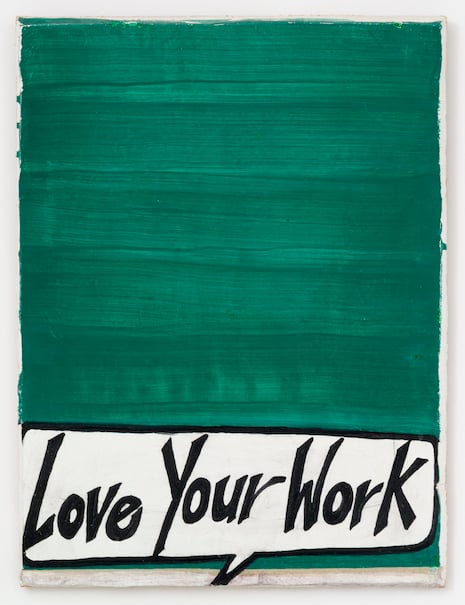
Spring is in the air, art is in the galleries. Get to it.

Artnet News

Rochelle Feinstein at On Stellar Rays, closes May 11.
Rochelle Feinstein has latched onto a singular idea for “Love Vibe,” her exhibition at On Stellar Rays. Each of the show’s eight paintings feature the same platitudinous phrase: “Love Your Work,” a not-so-subtle commentary on the all-too-often insincere praise showered on artists during openings. The clichéd catchphrase, presented in a comic-book inspired speech bubble, grows from painting to painting, as if the sentiment cannot be contained. It is written backwards and forwards, spilling out of the frame, eventually coming to dominate each canvas—the white noise drowning out true critical discourse. Don’t worry Rochelle. I won’t say I loved it, but I do appreciate the insight.
Sarah Cascone
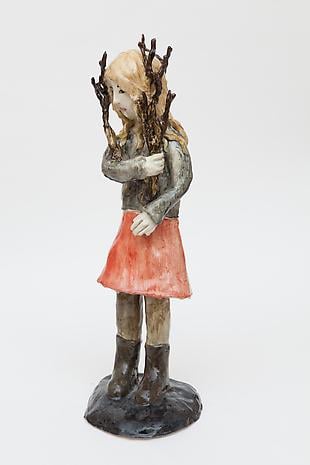
Klara Kristalova, Young Girl Growing (2013), glazed stoneware. Photo: courtesy the artist, Lehmann Maupin.
Klara Kristalova at Lehmann Maupin, closes April 26.
A diminutive statue of a faceless girl with windswept greets visitors to Klara Kristalova’s “Big Girl Now.” Her disturbing lack of features is the only the only indication of the considerably more fantastic world that awaits within. Part fairy tale, part childhood nightmare, the Swedish-based artist’s ceramic statues seem to be a manifestation of the horrors conjured by the vivid imagination of a little girl, as in the Guillermo del Toro film Pan’s Labyrinth. A winged woman with bug eyes and a fly’s proboscis, a girl with a large keyhole on her back, and a feathered bird-woman are among the strange hybrid creatures crafted by Kristalova from hand-painted glazed stoneware. Where a pair of twin girls hand-in-hand remind one of those creepy sisters from The Shining, another sculpture might recall a Grecian myth, such as Young Girl Growing, in which dark branches emerge from a girl’s torso, like Daphne transforming into a laurel tree.
Sarah Cascone

Laurie Simmons, Orange Hair/Snow/Close Up (2014). Photo: courtesy the artist, Salon 94.
Laurie Simmons at Salon 94, closes April 26.
Laurie Simmons’s latest work takes on a new context as the viewer slowly comes to realize that the anime-like woman pictured aren’t life-sized puppets, but real people inhabiting elaborately crafted masks and latex. After exploring lifelike Japanese sex dolls, Simmons has turned for inspiration to a relatively obscure form of Japanese cosplay known as Kigurumi, custom ordering masks from a Russian designer. Despite their cartoon faces, Simmons has captured a surprising range of emotion in her models, who appear in turn as wholesome, collegiate, all-American girls; wistful and vulnerable heroines; and aggressively-eager sex pots. Photographed in icy fields and an abandoned house, the Dollers, as they are called in Japan, dressed alternately in vintage clothes and fetish outfits sourced from the East Village, take on a life of their own, even snapping selfies as part of this engrossing work.
Sarah Cascone
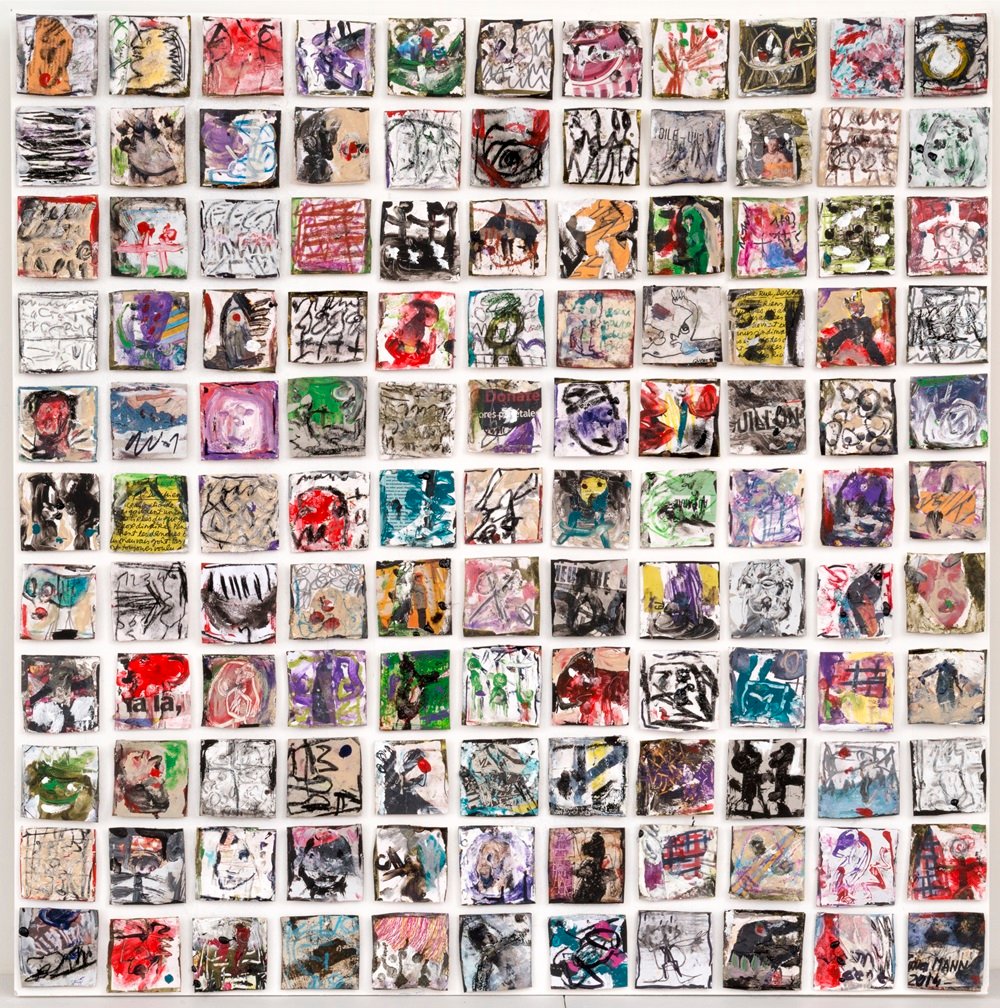
Gene Mann, Mythologie Quotidienne (2014)
Photo: Courtesy Andrew Edlin Gallery.
Gene Mann at Andrew Edlin Gallery, closes April 26.
With a style hovering somewhere at the crossroads of Outsider Art, Art Brut, and exuberant Expressionism, French-Swiss artist Gene Mann dazzles with this solo show at Andrew Edlin that marks her New York debut. Largely self-taught, Mann’s work virtually brims with raw energy. It is distinctive yet diverse, from the large Mythologie quotidienne at the gallery entrance, comprising 121 smaller squares of colorful semi-abstract primitive images that borrow from mythology and create the impression of a large scale mosaic, to the larger mixed-media canvases packed with figures that evoke tribal art and cave paintings.
Eileen Kinsella
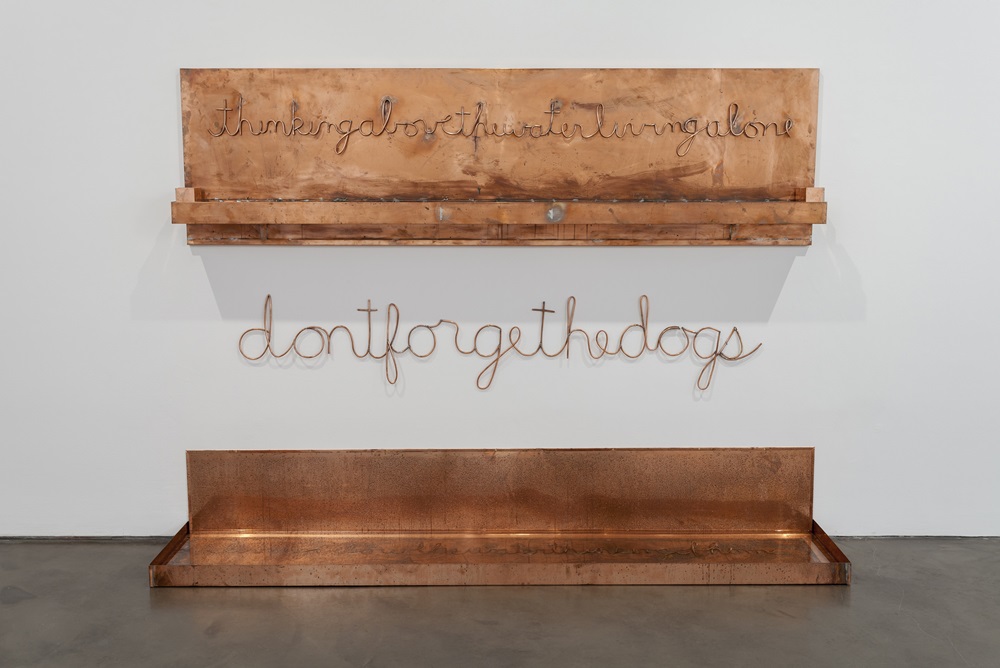
Robert Kinmont, thinking above the water (2013) copper and water
Photo: Joerg Lohse. Image courtesy Alexander and Bonin.
Robert Kinmont at Alexander and Bonin, closes May 24.
Robert Kinmont’s use of natural materials—wood, copper, earth and water—are a fitting medium for a conceptual artist primarily concerned with his environment. This show marks a return to his use of copper, which he uses to compelling effect in spelling out his messages. One message, for example, is life is full of water and mistakes (2014). Half-submerged in dirt, it forces the viewer to peer over the front of a wall-hung garden box in order to get a better view. In an earlier work, Copper Pots (given a chance) (1972), he has planted a group of vessels in the desert and filled them with water in hopes of germinating dormant seeds. In the early 1970s, Kinmont walked away from a budding art career to focus on his family and build his own school, known as Coyote. We’re glad he’s back.
Eileen Kinsella
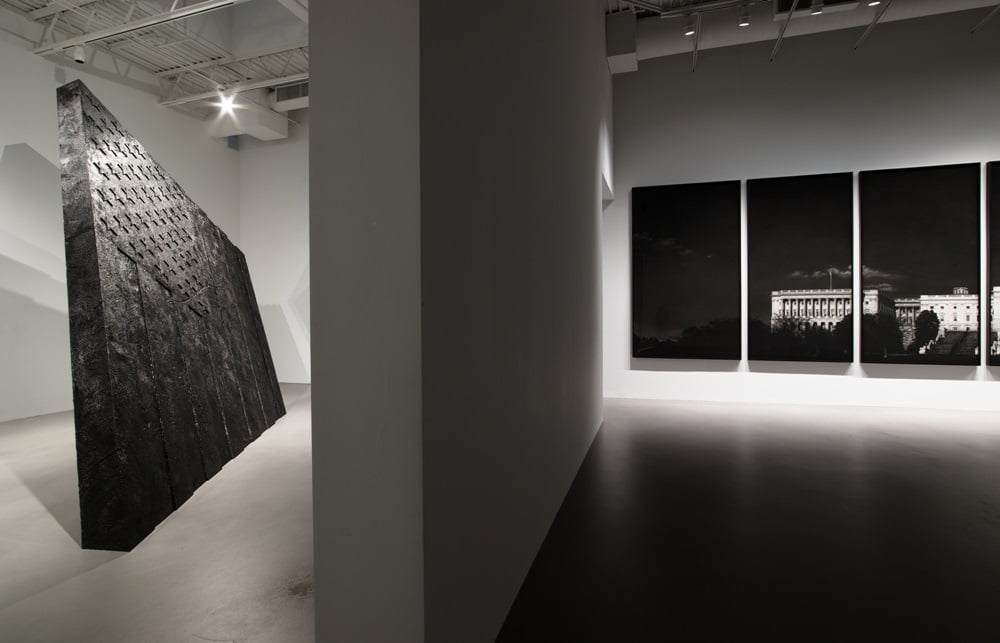
Robert Longo, installation view (2014).
Photo: Courtesy the artist and Petzel New York.
Robert Longo at Petzel Gallery, closes May 10, and Metro Pictures, closes May 23.
The first indication that the artist is delving into some heavy themes in American history are evident in his choice of show names: “Strike the Sun,” which quotes the grittily determined Captain Ahab in “Moby Dick,” while “Gang of Cosmos” refers to a quote from Walt Whitman. The latter show is an ambitious undertaking in which Longo, an original member of the “Pictures” generation, painstakingly recreates icons of Abstract Expressionism in charcoal on paper without sacrificing the rich, textural look of paint. The artist says it is similar to the way he was introduced to many of these works, as black and white photos in publications like Time magazine. At Petzel, Longo turns his critical eye to US politics, anchored by two stunning pieces, a massive American flag made of wood and cast entirely in black wax Untitled (The Pequod), that sinks into the floor, much like the ship it’s named for (“What’s holding it up?!” was a common refrain overheard at the opening). Also on view here, a massive detailed nine-panel drawing of the US Capitol as a menacing structure and a close-up of the riderless horse that led JFK’s funeral procession in 1963.
Eileen Kinsella
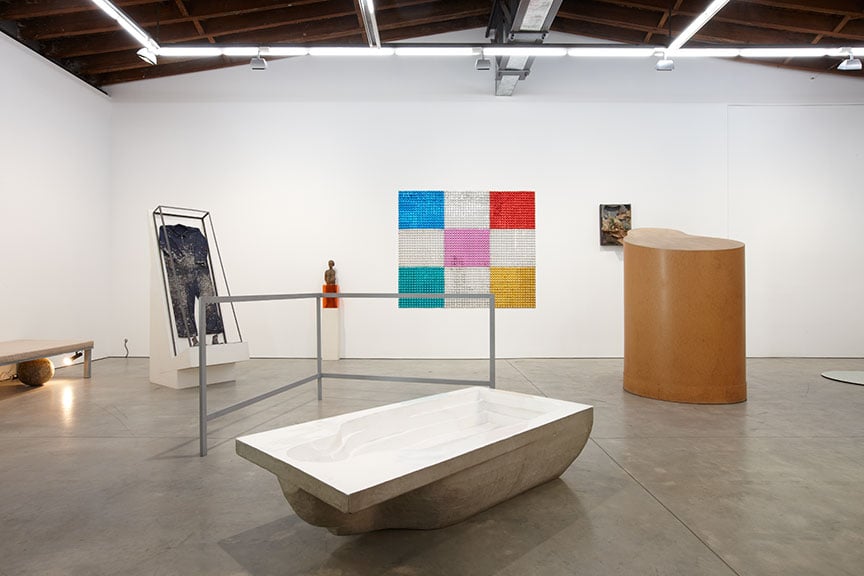
Installation views: Michelangelo Pistoletto, The Minus Objects (1965–1966) at Luhring Augustine Bushwick, New York. Dec 18, 2013–May 11, 2014.
Photo: Courtesy the artist, Luhring Augustine, New York, and Galleria Christian Stein, Milan.
Michelangelo Pistoletto at Luhring Augustine Bushwick, closes May 11.
Pistoletto’s works here—his oeuvre is widely regarded as fundamental to the birth of the Arte Povera movement in 1960s Italy—comprises a group of deceptively simple objects that are even more interesting by virtue of their proximity to one another. The experience of viewing the show is akin to being inside a pinball machine; your attention is bounced around the small room, off pieces that range from a bed made of mirrors to three dark canvases peeling off the wall. But take a moment with each one, and listen to each of them as they speak for themselves.
Cait Munro
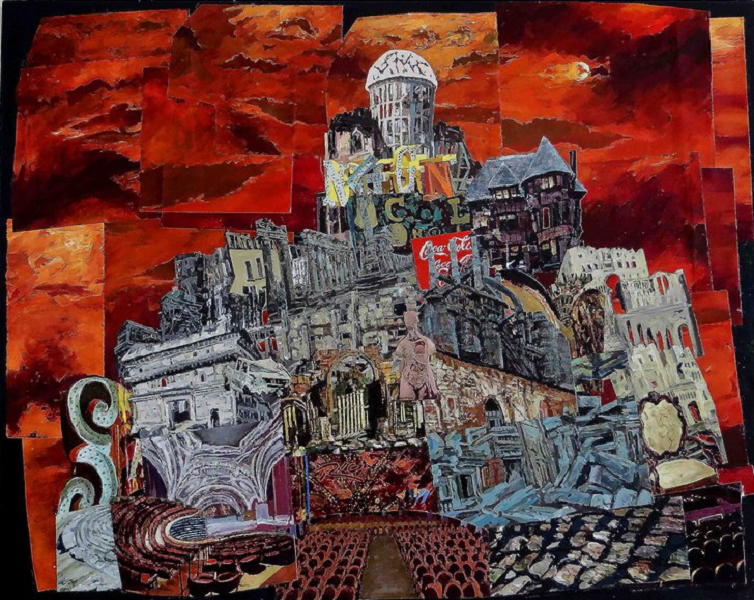
Arnold Mesches, Eternal Return 2, (2013)
Image courtesy of Life on Mars Gallery
Arnold Mesches at Life on Mars Gallery, closes May 11.
Now 90, Mesches has been painting the American social landscape for seven decades, producing works that toe the line between Social Realism and the Surreal. His collaged paintings depict anonymous masses, cities engulfed in flames, and sadistic looking mansions that prominently feature Coca-Cola logos. Though jarring and maybe inaccessible at first, the scenes reflect a kind of “stream of consciousness” mentality on the part of the artist, who has created a dystopian world where nothing is as it seems.
Cait Munro
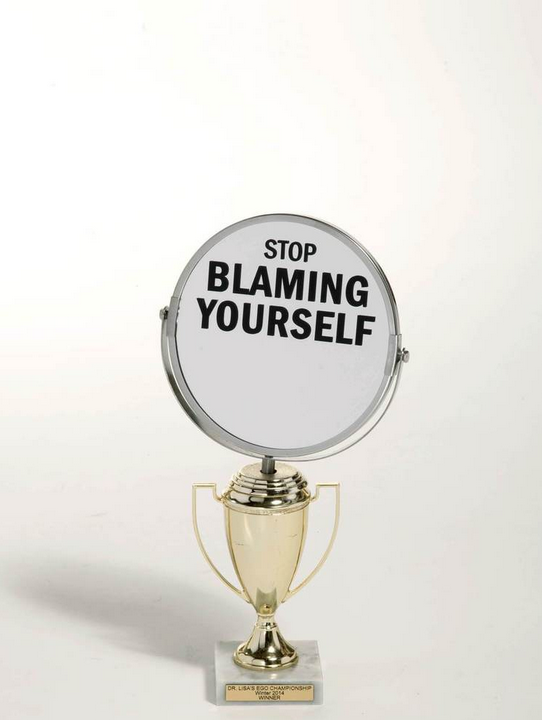
Lisa Levy, Stop blaming yourself
Image courtesy of Fuchs Projects
“Up, Close and Personal,” curated by Ruben Natal-San Miguel at Fuchs Projects, closes May 13.
Intimate, beautiful, and startlingly true slices of life populate this group exhibition of mostly photographs and a few well-placed sculptures. The works share close quarters on the walls, creating a chemistry and vitality akin to the experience of living in the world, where humor is often forced to share space with melancholy. From a diamond-studded “Barbie” necklace to a crying baby’s squished face to sad words carved into raw thighs, it’s all here.
Cait Munro
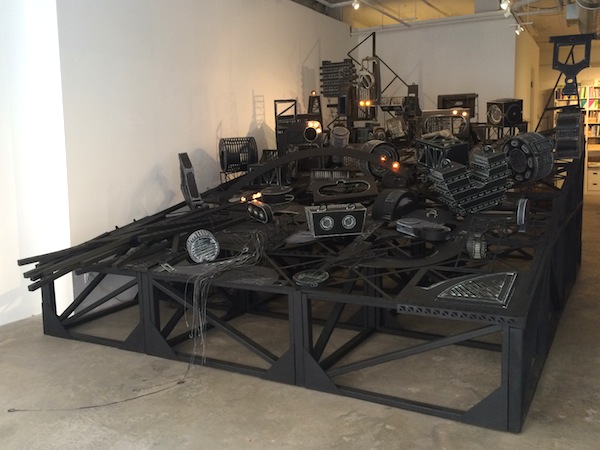
Jane South, Raked (2014).
Photo: Benjamin Sutton.
Jane South at Spencer Brownstone Gallery, closes April 30.
Once you get over the anxiety triggered by the sloping wave of jet-black mechanical bits and pieces seemingly poised to come rolling at you as you walk in the gallery door, the pleasure in South’s huge sculptural installation Raked (2014) comes from close observation of its wonderful details. Each paper cut-out component, from the gear wheels to the odd-shaped mechanical whatsits and cascading pulleys, is precisely sliced and shaded, like a woodblock print or comic book panel made three-dimensional. Works from her vibrant “Flats” series, hanging at the rear of the gallery, reverse this process by turning trapezoidal volumes into two-dimensional objects.
Benjamin Sutton
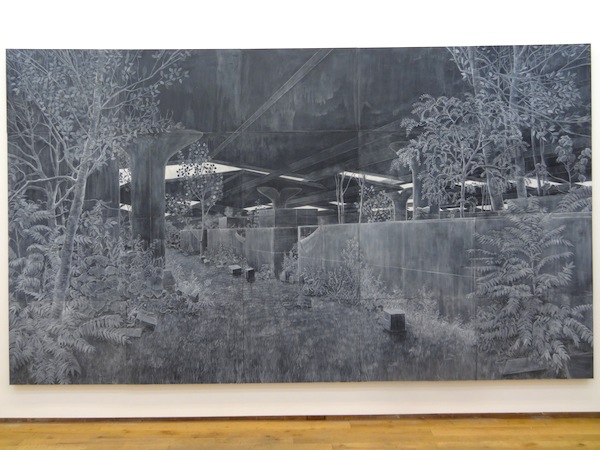
Ellen Harvey, New Forest (2013).
Photo: Benjamin Sutton.
“Thank You” at DODGE gallery, closes April 24.
It’s hard to say whether the seemingly somber mood recurring in many of the works in the beloved Lower East Side gallery’s final exhibition is inherent in the curation and the pieces themselves, or a result of the knowledge that this is the swan song for Kristen Dodge’s consistently surprising and exciting space. But between Dave Cole’s gloomy, Johnsian lead sculpture American Flag (Lead) (2013) and Ellen Harvey’s incredible, enormous grayscale painting of an office interior overtaken by foliage, New Forest (2013), there’s a palpable sense of an ending and new beginnings. Even Jason Middlebrook’s nine-and-a-half feet tall slab of redwood painted with a geometric pattern, Finding what’s left (2013), strikes the silhouette of an outsized headstone.
Benjamin Sutton
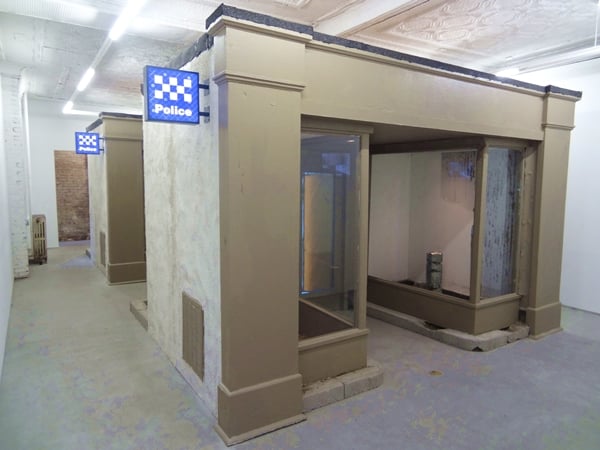
Corin Hewitt, The Third Station (2013).
Photo: Benjamin Sutton.
Corin Hewitt at Laurel Gitlen, closes May 11.
When an artist builds two full-scale generic police stations inside a gallery, you kind of expect them to be the exhibition’s main attractions. Weirdly, though, Hewitt’s two tabletop arrangements of odd-colored and distorted objects and foodstuffs in Laurel Gitlen’s back room steal the show. The collections of cast sculptures—like a kaleidoscope-hued glove, and appetizingly realistic pancakes and toast slices tinted various intensities of blue and red—provoke the type of close, forensic observation the duplicate police stations can’t quite conjure.
Benjamin Sutton
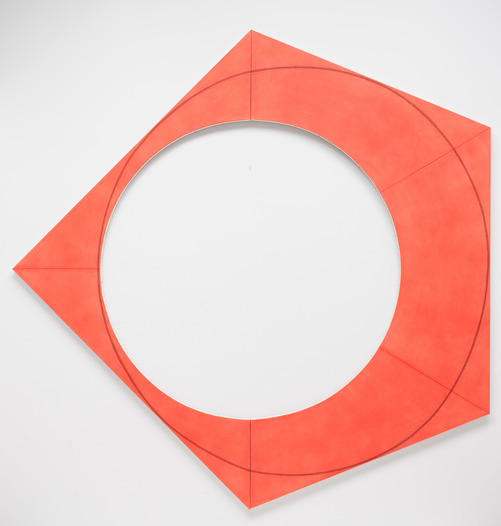
Robert Mangold, Angled Ring 1 (2011).
Image courtesy Pace Gallery.
Robert Mangold at Pace Gallery, closes May 3.
Robert Mangold’s paintings become more interesting the longer you observe them. That is saying a great deal because, in truth, most artworks quickly loose their allure the longer you spend with them. Mangold is therefore an artist to know, intimately, with this caveat—he seduces your eyes better to befuddle your mind with what are in essence simple yet elliptical, undulating combinations of shape, color and line. I don’t know what keeps me looking at his work but I am riveted, always, forever.
Benjamin Genocchio
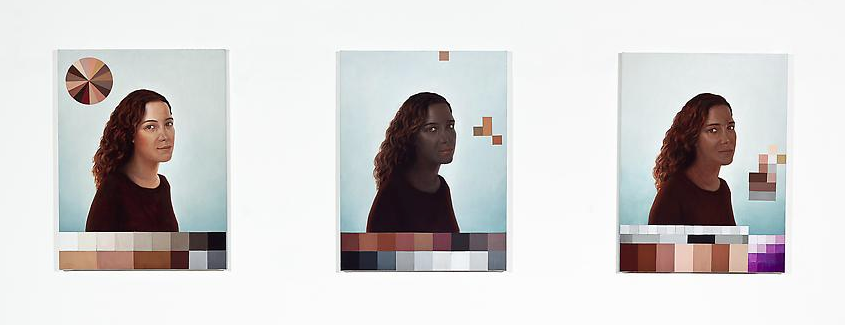
Adriana Varejao, Polvo Portraits (Seascape Series) (2014)
Image courtesy Lehmann Maupin Gallery.
Adriana Varejao at Lehmann Maupin, closes June 21.
Adriana Varejao’s latest show, the fifth with the gallery, continues an exploration of race, ethnicity, and history, the subjects of several now legendary painting series. If these newer works don’t quite measure up in terms of visual impact, they are more thoughtful and experimental in ways that seem to me right for the artist. We know that she can paint brilliantly, it is just a question of what: Here she paints herself using a variety of flesh tones, feeling her way through an identity matrix in search of what? This is a meditation on time, memory, aging. The subject matter here is more than skin deep.
Benjamin Genocchio